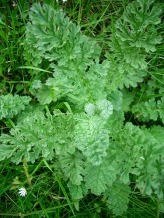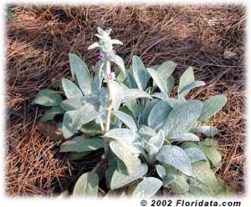Medicine Cat Training
~~Train or Chat Below~~
Herbs
Adder Bark
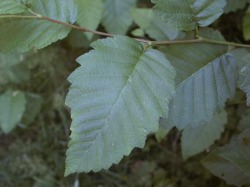
Best used for toothaches.
Borage Leaves
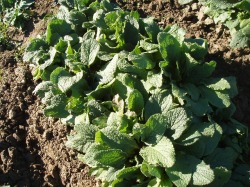
Leaves and Roots should be consumed to stave off fevers.Seeds and leaves should be consumed by the nursing Queen to increase available milk. Borage should never be used dried, only green. They are to be chewed and eaten. The plant can be distinguished by it's small blue or pink star-shaped flowers and hairy leaves.
Burdock Root
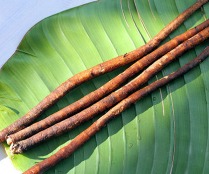
Burdock root is good for cuts and scrapes that are infected, especially rat bites. It is also used to relieve joint pains (like arthritis). It's a tall-stemmed, sharp-smelling thistle with dark leaves. A medicine cat must dig up the roots, wash of the dirt, and chew them into a pulp.
Catmint (Catnip)

Catmint is used to treat blackcough, greencough and whitecough. It can also help to relax a cat or cool a fever. It is very important to have. It is gathered and pressed into wounds to stop bleeding. It is generally only used with wounds that risk bleeding heavily as they can cause increaded risk of infection. It is a delicious-smelling, leafy plant tha's hard to find in the wild and is often found growing in Twoleg gardens. The best remedy treatment is for greencough.
Celandine
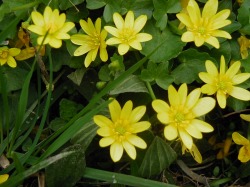
Celandine is best used to treat ailments of the eyes.
Chamomile
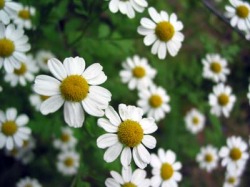
It is used to calm cats and to give them physical strength. It is also used to relax. The leaves and flowers sooth the heart and gives physical strength.
Chervil
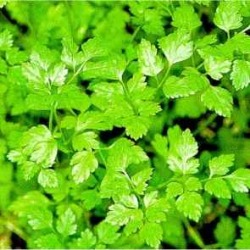
This white-flowered plant has several different properties. Chervil juice is best for infected wounds while the root is best for bellyache when chewed up. It is a sweet-smelling plant with large, spreading fern like leaves and small white flowers.
Chickweed
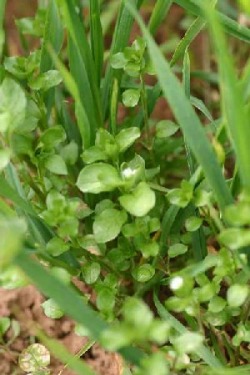
If there is no catmint available, chickweed is a good substitute for countering greencough.
Cobwebs
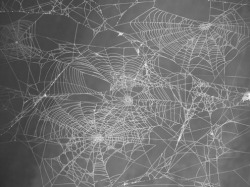
Cobwebs
It's common knowledge that cobwebs are used to stop bleeding. They can be found all over the forest; but be careful not to bring a spider back with you! Medicine cats wrap it around an injury to soak up the blood and keep the wound clean.
Coltsfoot
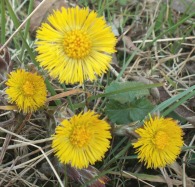
This bright yellow herb is quite effective against kit-cough. It is a flowering plant, a bit like a dandelion, with yellow or white flowers. The leaves can be chewed into a pulp, which is eaten to help shortness of breath!.
Comfrey
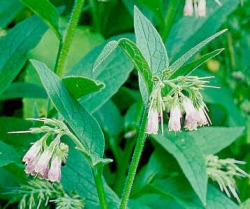
Best for healing broken bones.
Daisy Leaves
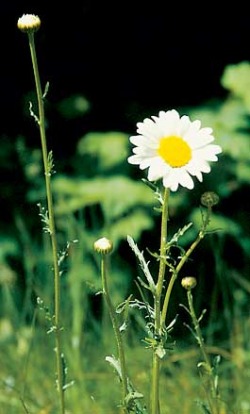
The leaves of this white and yellow plat work wonders on aching joints.
Deathberries (Deadly Nightshade)
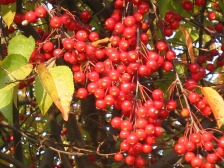
Deathberries are poisonous that a single berry can kill a cat. The berries, or any other part of the plant, when consumed with kill the cat who swallows if trhey are not given immediate help. Even then they may not always be saved. The roots and leaves may be chewed togetrher and applied to sore places, but must NEVER be applied to open wounds! It is a poison in addintion to a healing plant. They are red berries and are know to twolegs as yew berries. BEWARE!
Dock Leaves
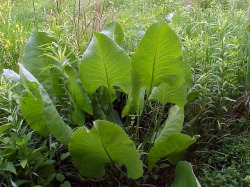
They are best for making a cat’s coat as slippery as a fish. It is a plant similar to sorrel. The leaf can be chewed up and applies to soothe scratches.
Dried Oak Leaves
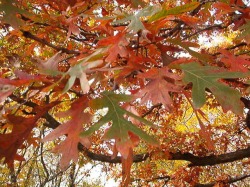
They are collected in autumn and stored in a dry place. They help to stop infections.
Feverfew
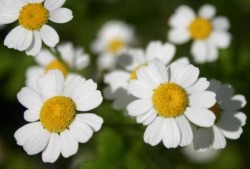
Used to cool feverish cats and to treat head pain. It is a small bush with flowers like daisies. The leaves can be eaten to cool down body temperature, particularly for cats with a fever or chills although.
Goldenrod
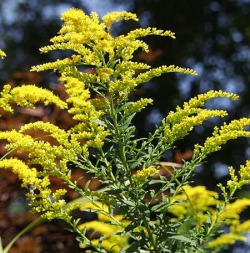
Used in a poultice to treat aching joints and stiffness within muscles. It is a tall plant with bright yellow flowers. The poultice of this is terrific for healing wounds.
Honey
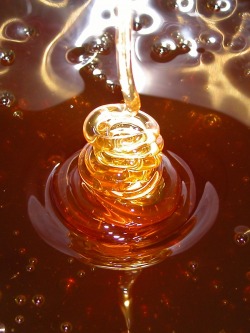
This sticky liquid was used to soothe the throats of cats who have breathed in too much smoke from a fire or just irritated throats and other things. It is a sweet golden liquid created by bees. It is difficult to collect with out getting stung, but great for soothing infections.
Horsetail
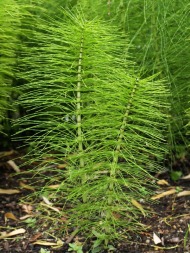
The sap of horsetail can be used in combination with cobwebs to stop bleeding. It is a tall plant with bristly stems that grow in marshy areas. The leaves can be chewed up and applied as a poultice to stop infection.
Juniper Berries
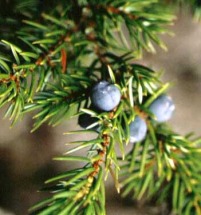
Good for calming a cat or belly aches or whitecough. The berries ease the stomach and can serve as a counter poison. The leaves are used to ease coughs and other respiratory problems. It is a bush with spiky dark green leaves and purple berries.
Lavender
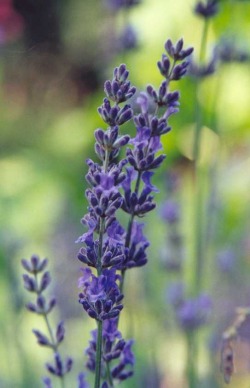
The leaves and flowers are particulaly good when eated for easing pains in the head and throat; good for fevers and chills. Inhaling the sent of the fresh flowers can also calm the nerves.
Marigold
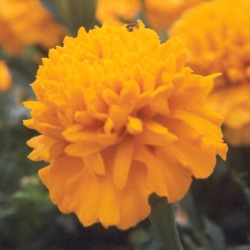
Good for dressing wounds and healing infections. The leaves and flowers should be consumed to relieve chills. The leaves and petals can be shewed and place on wounds to prevent infection. It is a bright orange or yellow flower that grows low to the ground.
Mouse Bile
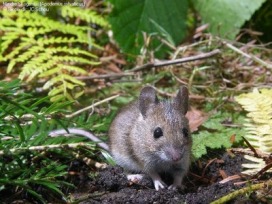
(I decided just to add a picture of a mouse because I'd rather not see Mouse Bile!!) It is used to rid cats' pelts of ticks. Bile comes from the liver of the common mouse and may be harvested and used to kill stubborn fleas as well as ticks. It smells gross; a dab of it is applied to moss and put on the bug problem. Paws need to be washed thoroughly in running water afterward.
Nettle Leaves
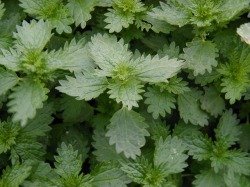
These leaves are used to treat swelling, rashes or fevers. The spiny green seeds can be administered to a cat who's swallowed poison.
Nightshade

Nightshade plants are as poisonous as deathberries.
Poppy
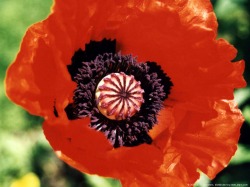
The poppy's seed is the best herb there is to numb pain and ensure a good night’s sleep. The flower heads should be consumed together to relive continuous coughs. The flower heads should be consumed together to relive coughs. The petals and leaves should be chewed to aid in sleep and improve resting. Poppy seeds are small and black and can be shaken from a dried poppy flower. They help soothe cats from suffering shock and distress. They are not recommended for fusing Queens.
Ragwort Lamb's Ears
These two different mountain herbs, ragwort is shown on the left while lamb’s ears are pictured on the right are used by the Tribe of Rushing Water to helpstrengthen cats.
Snakeroot
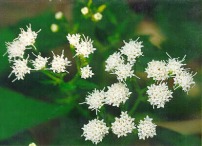
It is used to counter poison.
Tansy
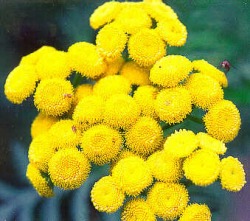
The leaves, flowers, and stems should be eaten together to remove worms. The leaves may be chewed to relive joint aches. The flowers should be consumed to remove coughs. Pregnant Queens should NEVER be given Tansy, for it causes miscarriages. It is a strong-smelling plant with round yellow flowers and needs to be eaten in small doses.
Thyme
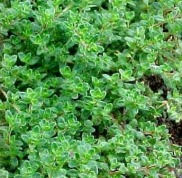
Thyme has a sharp scent that soothes even the most agitated cat, or to aid in bringing restful sleep.
Watermint
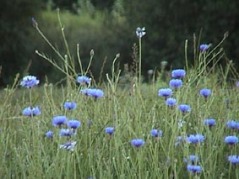
Watermint is a good treatment for bellyaches. It is a leafy green plant found in streams or damp areas. It is usually shewed into a pulp and then fed to a cat.
Wild Garlic
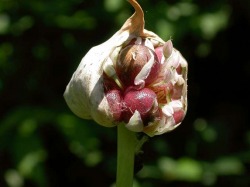
If you’ve got a lot of cuts and scrapes, make sure you roll in some wild garlic to keep out infection. It also helps cure ear infections. It helps especially if you have rat bites.
Yarrow
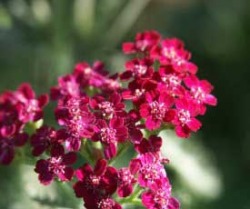
This herb can be used as an ointment, used to soften paw pads, or to make a cat sick so they can expel poison. It is a flowering plant whose leaves can be made into various poultices.
Illnesses
*Ingest means ‘eaten’ and apply means ‘don’t eat it, it goes on the skin.
Breathing- coltsfoot, juniper berries [both ingest]
Infected wounds- horsetail, burdock root, marigold, chervil leaf juice [all apply] plus rolling in wild garlic aids the healing but shouldn’t be the only treatment
Bellyache- water mint, chervil root [all are ingested]
Getting rid of ticks- mouse bile [apply]
Ingested poison- yarrow (induces vomiting), snakeroot [both are ingested]
Heals wounds/sores- marigold, burdock root [apply both]
Greencough, last resort- catnip (restores energy) [patent chews it]
Fever, headache- feverfew, nettle, borage leaves best, bark of willow [all ingest]
Chill- lavender [ingest]
Irritated throat- honey [ingest]
Pain killer- poppy seeds, chamomile [both ingest]
Wound bleeding- cobwebs [apply]
Cracked pads- yarrow ointment [apply]
Aching joints- ragweed + juniper berry poultice, daisy leaves [ingest both]
Anxiety- thyme [ingest]
Broken bones- comfrey, broom poultice (I don’t know exactly what that is) [?]
Rash- stinging nettle [apply]
Bee sting- white liquid inside dandelion stem [apply]
Cough- tansy [ingest]
Aching/restores eyes- celandine
Swelling- stinging nettle [?]
Toothache- alder bark
Strength- ragwort [ingest] wheat also, possibly
Milk- Borage Leaves [ingest]
Poisons in Clan territory- foxglove, yew berries (aka- death berries)
Note- Water mint is only available in marshy/wet areas. Catnip is only found in two-leg gardens.
Treatments
Dislocation of fore/hind leg- First, the cat is given a poppy seed to ease the pain and, hopefully reaction skills. Then, one cat must restrain the patient, so the medicine cat’s face is not clawed off. The medicine cat then grips the patient’s leg in the jaws and gives quick pull. A sharp click should be heard and the injured cat should respond to this with a yowl and a struggle. Then the poppy seed should really be taking effect, causing the patient to not be able to think straight and stagger. He or she should be sent to rest immediately after. The process of relocating the leg should be done in no less than a minute.
Detecting fever- Medicine cat must press their nose to the pad of the patient’s paw. Then, if still unsure, the medicine cat can compare to another, healthy cat.
Detecting hearing disorders- Simply have a cat stand far away from the cat and call it by its name without giving any sort of visual. If the cat in question does not respond, have the calling cat near a few paw steps closer then call again, in order to know the severity.
Lesser-Herbs
Alfalfa – Used to prevent tooth decay
Aloe Vera – Use the leaves; treat burns and skin problems (insect bites, etc.)
Blessed Thistle – Helps strengthen the heart & lungs; increases circulation
Bramble twigs (chewed to a fine syrup) – Helps to sleep
Broom Malice Poultices – Open wounds
Chapparal – Helps clean faces (helps with cat acne)
Echinacia - Used to ease infection.
Ferns – Helps to clean out wounds by just the inside part after “crunching” off the outer “shells”
Fever - Leaves can be used to reduce fever, in addition to being consumed to aid against colds and stomach ailments.
Ginger – Used for asthma and coughs
Hawthorne Berries – Treats heart burns and indigestion
Huckleberry – A muscle pain reliever
Ivy – Calms down
Ragweed Leaves - Relives stiff joints
Roots - Good for belly-aches
Sacred bark – Used for upset stomach
Willow (Tree) - Water from beneath the bark of the flowering willow may be dripped into the eyes to help clear blurriness of vision. It may also be applied to dry patches of skin to sooth itches.
Small amounts of Willow Bark may be consumed to ease pain, act against inflammation, and to ease diarrhea or fevers.
Healing Techniques
How to Stop Heavy Bleeding: First the area that is bleeding must be cleaned of all large objects, such as twigs and leaves. Then cobwebs must be pressed heavily against the bleeding area. Pressure must be applied and kept on the wound until it stops bleeding. Once the bleeding has stopped, ease pressure gradually and apply any herbs necessary for fighting infection or healing the wound efficiently. Then apply more cobwebs and have injured cat rest for a day or more.
Making a sick cat comfortable: Ill or Injured cats must be taken care of very carefully. Always make sure that the bedding they lay on is dry and free of sharp stones or sticks. Bedding should be moss or soft pine needles, and should be changed daily. Be sure that the cat is out of the line of harsh sunlight, rain, and snow fall. Injured and ill cats are extremely sensitive to noise, so keep the worst cases far back in the den to avoid any disturbances. Moss soaked in water should be offered twice daily to cats who can drink.
Feeding a sick cat: If a cat is only injured, they should be able to eat for themselves. Bring one piece of fresh-kill daily to all injured cats. Cats who are ill may have more trouble. Cats who cannot keep down food should not be fed. They will need to be carefully monitored for signs of malnutrition and dehydration. Cats who can eat should be given only small, easy eaten pieces of fresh-kill. This includes mice, voles, and fish. Rabbits are too large, and birds must be de-feathered carefully. Small pieces are the key to a sucessful feeding. Do not let sick cats over eat, as it will make them sicker.
Treating an unknown illness: Cats who are found to have an unknown illness must be immediantly quarentined from the population. Only the medicine cat may see them. All others must be kept away until the cat is declared safe again. The same care must be given to the cats as normal ill cats, and treatments that may promise to heal must be tried. If the case becomes severe, it may serve well to meet with other medicine cat to discuss the problem
Apprentice Ceremony
Medicine Cat: Spottedpaw, is it your wish to enter into the mysteries of StarClan as a medicine cat?
Medicine Cat Apprentice: It is.
Medicine Cat: Then come forward
*Apprentice obliges*
Medicine Cat: Warriors of StarClan, I present to you this apprentice. She has chosen the path of a medicine cat. Grant her your wisdom and insight so that she may understand your ways and heal her Clan in accordance with your will.
*Lies down before Moonstone/whatever-else-it-is*
Apprentices
Unlike normal apprentices, Medicine cat apprentices are not appointed by the clan's leader, although some agreement from the leader is essential. The current medicine cat must choose a cat who is willing to become a medicne cat and take them to Moonstone. StarClan must then approve or disapprove of the choice. Apprentices to medicine cats are expected to learn all the different herbs and their applications before they can become full medicine cats. A medicine cat apprentice does not receive his or her full name until StarClan decides it is deserved.Apprentices are usually mild mannered and relatively quiet, but this is not a requirement. They are expected to keep secret anything they learn from StarClan until otherwise instructed by their mentor.
Name Ceremony
Medicine Cat: I, Dreamcloud, medicine cat of ThunderClan, call upon my warrior ancestors to look down on this apprentice. She has trained hard to understand the way of a medicine cat, and with your help she will serve your Clan for many moons. Spottedpaw, do you promise to uphold the way of a medicine cat, to stand apart from rivalry between Clan and Clan, and to protect all cats equally, even at the cost of your life?
Medicine Cat Apprentice: I do.
Medicine Cat: Then, by the powers of StarClan, I give you your true name as a medicine cat. Spottedpaw, from this moment you shall be known as Spottedleaf. StarClan honors your knowledge and certainty, and we welcome you as a full medicine cat of ThunderClan.
Medicine Cats & the Warrior Code
Medicne cats often do not have to fully obey the traditional warrior code. Because of their close connection with StarClan, these special healing cats often hold different allegiances and ideals than most normal cats. Medicine cats may freely cross Clan boundaries if they are going to or coming from the Moonstone. All clan members respect and trust medicine cats. Medicine cats accompany their leaders to the Moonstone when they recieve their 9 lives (on occasion, they may not) or need to commune with StarClan. Medicine cats are respected by all the forest cats, regardless of their clans. Medicine Cats must also ad here to different rules than normal clan cats. They cannot have kits. They cannot take a mate. Medicine cats are expected to try and resolve all conflicts peacefully before resorting to violence. They are expected never to create false dreams or lie about what messages StarClan have shared with them.
Medicine Cats and StarClan
Medicine cats share a unique bond with the cats of StarClan. They travel to the Moonstone to share dreams with the warrior ancestors and sometimes recieve prophetic dreams about the future. Medicine cats travel to the moonstone for a variety of reasons:
*Accompany a leader to recieve their 9 lives
*Initiate a new apprentice
*Intiate a new Medicine Cat
*During the half moon to share dreams
StarClan can also speak with medicne cats through regular dreams, though this usually
Helpful Hints
Storing herbs in Winter: Storing herbs in winter can often be quite difficult. Herbs will spoil quickly after being gathered unless dryed. While drying is possible in the seasons of leaf-green, green-leaf, and leaf-fall, it is rarely an option in leaf-bare. A recommended technique is pressing. This methods works only with large, leafy herbs. Take a flay roak and place it near the den. Place the herb on the rock and place another flat rock onto that. The herb will soon be flat and dry. Herbs that cannot be dryed or pressed should be stored immediantly after gathering. Dig a hole inside of your den. Line the hole with dry leaves and twigs. Then place all herbs into the hole and cover with snow. The herbs will keep for several moons.
Organizing your den: Organization is very important. An unorganized den may lead to a cat's death. All herbs should be contained in special hollows in the dirt at the den's entrence. These hollows should be scooped shaped, and lay close to the entrence and off to the side. The main den area should be covered with a layer of dry moss. The moss must be changed every three days to ensure comfort and cleanliness. A flat stone should be placed near the herb hollows for easy grinding acess. Keep the rock cleared off and do not pile herbs or prey onto the rock. Be sure to leave a clear path through the den so cats can move freely withour stepping on the injured or ill.
Dealing with multiple wounded at one time: Often, after a battle or skirmish, many cats will be wounded at once. It is important to prioritize the wounded quickly and efficiently. First, check to see if any very young or very old cats were injured. Tend to these cats first. Then go and tend to the heavily bleeding or bitten. These must be treated quickly to prevent infection. Next comes any cat whose paws or eyes were injured. Finally, all minor injuries can be dealt with as necessary. Move any seriously wounded cats to the den for observation and special care.
